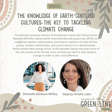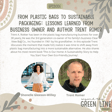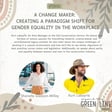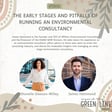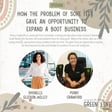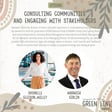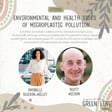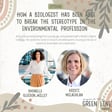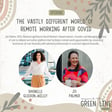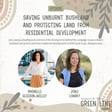
The Regeneration of Pasture Cropping: An Integrated Approach To Grain And Pasture Production
On today’s episode of Beyond the Green Line, Shonelle Gleeson-Willey talks with the inventor of pasture cropping: Colin Seis.
Colin oversees 3,500 Merino sheep on his property in the Central Tablelands of New South Wales, where he also grows cereal crops and natives grasses. He and his son, Nick, breed Kelpie dogs on the land as well.
Collin has received a Conservation Farmer of the Year Award, Australian Carbon Farmer of the Year, NSW Regional Achievement and Community Award, and was recently called one of the top 6 most influential farmers in the world by the Melbourne Weekly Times.
His 2,000 acre plot is called Winona, and it has a widespread reputation for holding up amazingly during drought. Its predominant soils include coarse and fine sands derived from granite, which are not considered highly fertile, but he shares with us how pasture cropping is a way of working alongside nature instead of against it, resulting in a more robust and resilient farm.
Colin describes pasture cropping as the way that crops were originally cultivated in ancient times: not by killing every other plant in the area, but by sewing crops in with native grasses and other plants, so that competing roots can improve a crop’s vitality, water retention and wind protection.
Colin developed the approach of pasture cropping along with a neighbor farmer after a devastating bush fire in 1979. Today, the land can now officially be called restored grassland, and Colin can be found teaching his regenerative methods to farmers around the world through his online “Smart Soil” classes.
Collin’s sheep are also managed holistically, using a method he describes as time-controlled grazing.
He educates us that gross margin (profit) is greater in a pasture cropping, because multiple products are being harvested. The crops are about the same yield, just slightly more variable. But native grass seed is harvested in addition, increasing profits.
Fertilizer is still used on Winona, but has been reduced over time as sheep grazing increasingly becomes a type of natural mulching and fertilizing.
Collin recounts that in the early years, he was ostracized by the industry for attempting to sell combined crops, and had to have self-belief and confidence to continue. He notes that his first supporters were ecologists, because they had understanding of diverse systems.
He discloses that one of the biggest advantages of pasture cropping is the stimulation and germination of dormant seed - even seed that has been sitting for decades. This can be a significant factor in restoring grasslands.
Soil carbon levels have increased over time at Colin’s farm, and current measurements are detecting increased carbon as far down as a meter. Colin shares that this is due to plant diversification, and bigger perennial plants with deeper roots.
We know you’ll be encouraged to hear from one of the legends in regenerative agriculture on this episode.
Check out Colin’s family land:
www.Winona.net.au
And take a look at his classes:
www.SmartSoilEdu.com
